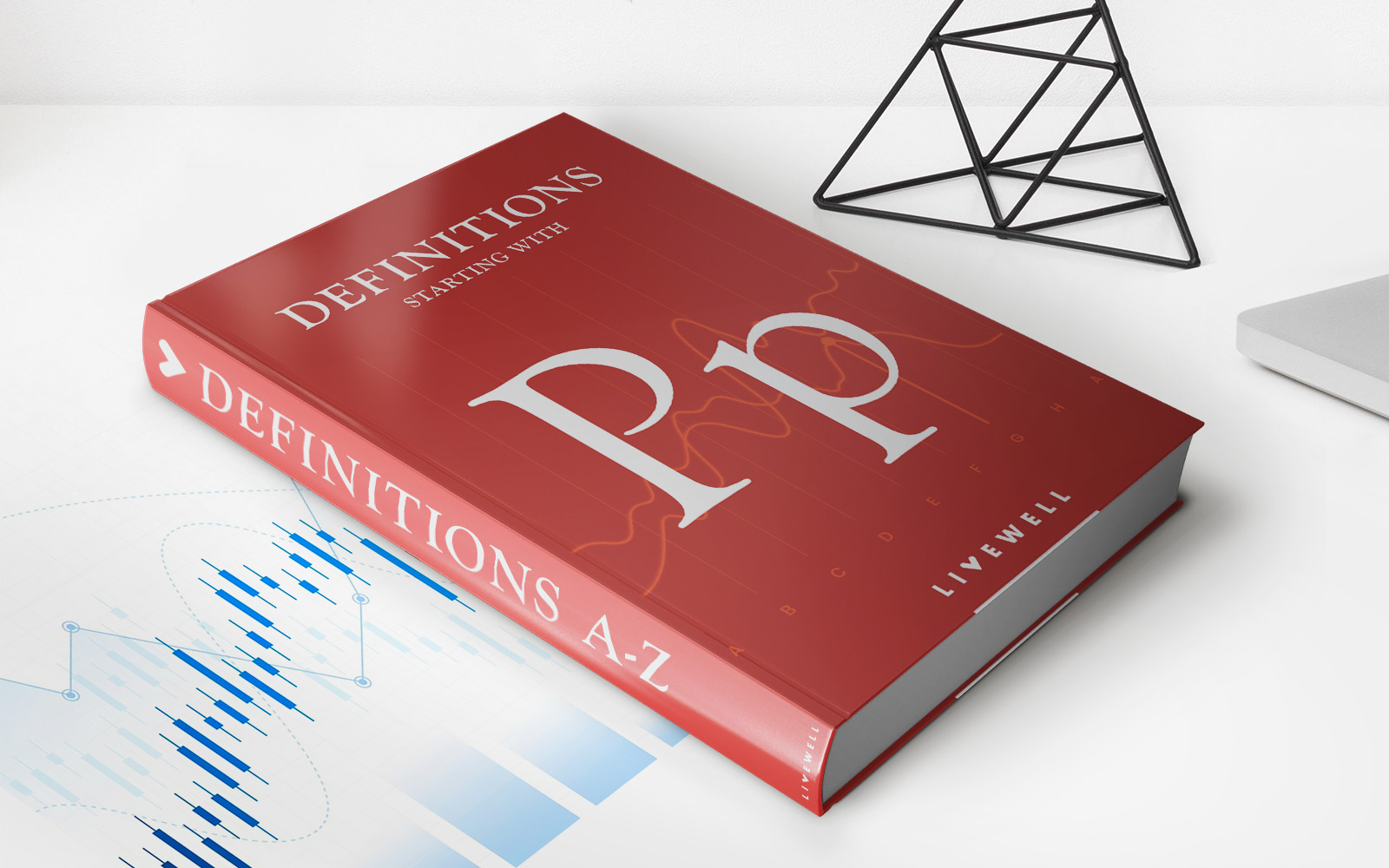

Finance
What Is The Minimum Payment For Google Ads
Published: February 25, 2024
Learn about the minimum payment for Google Ads and manage your finances effectively. Find out how to budget for your advertising costs.
(Many of the links in this article redirect to a specific reviewed product. Your purchase of these products through affiliate links helps to generate commission for LiveWell, at no extra cost. Learn more)
Table of Contents
**
Introduction
**
Google Ads, formerly known as Google AdWords, is a powerful online advertising platform that allows businesses to reach their target audience through paid ads displayed on Google's search engine and partner websites. One crucial aspect of managing Google Ads campaigns is understanding the minimum payment required to keep the ads running effectively.
The minimum payment for Google Ads refers to the lowest amount an advertiser can pay to maintain their ad campaigns. It's essential for businesses to grasp the concept of minimum payment to ensure their ads continue to be displayed and receive adequate exposure to potential customers.
This article aims to provide a comprehensive understanding of the minimum payment for Google Ads, including the factors affecting it, methods to determine the minimum payment, and tips for managing minimum payment costs effectively. By gaining insights into these aspects, advertisers can optimize their Google Ads campaigns and maximize their return on investment.
Understanding the minimum payment for Google Ads is crucial for businesses aiming to leverage this advertising platform to enhance their online presence and attract potential customers. Let's delve into the intricacies of Google Ads minimum payment to gain a deeper understanding of its significance and implications for advertisers.
**
Understanding Google Ads Minimum Payment
**
Google Ads operates on a pay-per-click (PPC) model, where advertisers are charged when users click on their ads. The minimum payment for Google Ads is the minimum amount an advertiser must pay to maintain their ad campaigns and keep them active. This payment ensures that the ads continue to be displayed to the target audience, driving potential traffic and conversions to the advertiser’s website.
It’s important to note that the minimum payment for Google Ads can vary based on several factors, including the type of ad campaign, bidding strategy, and the competitiveness of the targeted keywords. Advertisers must comprehend the dynamics of minimum payment to effectively manage their advertising budget and achieve optimal results from their campaigns.
Google Ads offers different types of ad campaigns, such as search network campaigns, display network campaigns, video campaigns, and app campaigns. Each campaign type may have distinct minimum payment requirements based on the ad format, objectives, and targeting options. Understanding the specific minimum payment criteria for each campaign type is essential for advertisers to make informed decisions regarding their advertising budget allocation.
Furthermore, the bidding strategy employed by advertisers significantly influences the minimum payment for Google Ads. Whether using manual CPC (cost-per-click) bidding, automated bidding strategies like target CPA (cost-per-acquisition) or target ROAS (return on ad spend), or enhanced CPC, the bidding approach directly impacts the minimum payment threshold. Advertisers need to align their bidding strategy with their campaign goals and budget constraints to ensure efficient utilization of their advertising funds.
Additionally, the competitiveness of the targeted keywords and the industry niche can impact the minimum payment for Google Ads. Highly competitive keywords often require higher bids to secure ad placements, affecting the minimum payment threshold for maintaining ad visibility and competitiveness in the auction-based ad system.
By understanding the nuances of Google Ads minimum payment and its underlying factors, advertisers can make informed decisions regarding budget allocation, bidding strategies, and campaign optimization. This knowledge empowers advertisers to navigate the intricacies of Google Ads effectively, maximizing the impact of their advertising efforts and achieving their marketing objectives.
**
Factors Affecting Minimum Payment
**
The minimum payment for Google Ads is influenced by various factors that impact the cost and effectiveness of ad campaigns. Understanding these factors is essential for advertisers to strategically manage their budget and achieve optimal results. Here are the key factors affecting the minimum payment for Google Ads:
1. Ad Quality and Relevance:
Ad quality and relevance play a significant role in determining the minimum payment for Google Ads. Google uses a metric called Quality Score to evaluate the relevance and quality of ads, keywords, and landing pages. Ads with higher Quality Scores are rewarded with lower costs per click (CPC) and may require a lower minimum payment to maintain ad visibility. Advertisers should focus on creating compelling, relevant ads that align with user search intent to improve their Quality Scores and reduce minimum payment requirements.
2. Keyword Competition:
The competitiveness of keywords targeted in ad campaigns directly influences the minimum payment for Google Ads. Highly competitive keywords often require higher bids to secure ad placements, resulting in a higher minimum payment threshold. Advertisers operating in competitive industries or targeting popular keywords must be prepared to allocate a sufficient budget to meet the minimum payment requirements for maintaining ad visibility and competitiveness.
3. Bidding Strategy:
The chosen bidding strategy, whether manual CPC, automated bidding, or enhanced CPC, impacts the minimum payment for Google Ads. Automated bidding strategies like target CPA and target ROAS may adjust bids to meet performance objectives, affecting the minimum payment threshold. Advertisers should select bidding strategies aligned with their campaign goals and budget constraints to optimize their minimum payment costs while achieving desired outcomes.
4. Ad Format and Placement:
The type of ad format and placement, such as search network ads, display network ads, video ads, or app ads, can influence the minimum payment requirements. Different ad formats may have varying minimum payment thresholds based on their performance and visibility across Google's advertising network. Advertisers should consider the unique minimum payment criteria for each ad format and placement to make informed decisions about their budget allocation and ad strategy.
5. Geographic Targeting:
Geographic targeting, including location-based targeting and language preferences, can impact the minimum payment for Google Ads. Advertisers targeting specific regions or languages may encounter varying minimum payment requirements based on the competitiveness and demand for ad placements in those areas. Understanding the nuances of geographic targeting helps advertisers optimize their minimum payment costs while effectively reaching their target audience.
By considering these factors, advertisers can gain insights into the dynamics of minimum payment for Google Ads and devise strategic approaches to manage their advertising budget efficiently while maximizing the impact of their ad campaigns.
**
How to Determine Minimum Payment for Google Ads
**
Determining the minimum payment for Google Ads involves a strategic assessment of various factors to ensure effective budget allocation and campaign management. Advertisers can follow these essential steps to determine the minimum payment requirements for their Google Ads campaigns:
1. Keyword Research and Analysis:
Conduct comprehensive keyword research to identify relevant and high-performing keywords for your ad campaigns. Evaluate the competitiveness and search volume of keywords to gauge the potential minimum payment required to secure ad placements and visibility.
2. Quality Score Evaluation:
Assess the Quality Scores of your ads, keywords, and landing pages within Google Ads. Higher Quality Scores often correlate with lower CPC and minimum payment requirements. Improving ad relevance and user experience can positively impact the minimum payment for maintaining ad visibility.
3. Budget Planning and Forecasting:
Develop a clear budget plan for your Google Ads campaigns and utilize forecasting tools within the platform to estimate the minimum payment needed to sustain your desired ad exposure and performance. Consider different bidding strategies and budget allocation scenarios to determine the optimal minimum payment thresholds.
4. Competitive Analysis:
Analyze the competitive landscape within your industry and target market. Understand the minimum payment trends for competitive keywords and ad placements to benchmark your budget requirements and make informed decisions about your ad spend.
5. Ad Format and Placement Consideration:
Evaluate the performance and minimum payment criteria for different ad formats and placements available in Google Ads. Determine the most cost-effective ad formats and placements based on their minimum payment requirements and potential impact on your campaign objectives.
6. Geographic Targeting Assessment:
Consider the geographical locations and language preferences of your target audience. Assess the minimum payment variations based on geographic targeting to optimize your budget allocation and reach the right audience effectively.
7. Testing and Optimization:
Implement A/B testing and optimization strategies to refine your ad creatives, landing pages, and targeting parameters. Continuously monitor the performance of your campaigns and adjust your minimum payment strategy based on the insights gained from testing and optimization efforts.
By following these steps, advertisers can gain a comprehensive understanding of the minimum payment requirements for their Google Ads campaigns and develop strategic approaches to manage their advertising budget efficiently while maximizing the impact of their ad spend.
**
Tips for Managing Minimum Payment Costs
**
Effectively managing minimum payment costs is crucial for advertisers to optimize their Google Ads campaigns and achieve a favorable return on investment. Implementing the following tips can help advertisers strategically navigate minimum payment requirements and maximize the impact of their ad spend:
1. Quality Ad Creation:
Focus on creating high-quality, relevant ads that align with user search intent. By improving ad quality and relevance, advertisers can potentially reduce their minimum payment costs through higher ad rankings and lower CPC.
2. Strategic Keyword Selection:
Choose keywords strategically based on relevance, search volume, and competitiveness. Long-tail keywords and niche-specific terms can offer cost-effective opportunities to reach potential customers while managing minimum payment costs.
3. Refine Bidding Strategies:
Continuously optimize bidding strategies to align with campaign goals and budget constraints. Experiment with different bidding approaches, such as automated bidding and manual CPC, to find the most cost-effective method for meeting minimum payment requirements.
4. Leverage Ad Extensions:
Utilize ad extensions to enhance ad visibility and provide additional information to users. Well-optimized ad extensions can improve ad performance and potentially reduce the minimum payment needed to maintain ad prominence.
5. Monitor and Adjust Geographic Targeting:
Regularly review the performance of geographic targeting and adjust settings based on the impact on minimum payment costs. Refining geographic targeting parameters can help advertisers allocate their budget efficiently and reach the most valuable audience segments.
6. Landing Page Optimization:
Optimize landing pages to improve user experience and relevance. A compelling landing page can contribute to higher Quality Scores, potentially lowering minimum payment requirements and improving ad performance.
7. Budget Allocation Alignment:
Align budget allocation with campaign objectives and performance expectations. Distribute your budget effectively across campaigns and ad groups to meet minimum payment requirements while maximizing the overall impact of your ad spend.
8. Continuous Performance Monitoring:
Monitor the performance of your ad campaigns regularly and make data-driven adjustments to manage minimum payment costs effectively. Stay informed about changes in minimum payment requirements and adapt your strategies accordingly.
By implementing these tips, advertisers can proactively manage minimum payment costs for their Google Ads campaigns, optimizing their budget allocation and maximizing the effectiveness of their advertising efforts.
**
Conclusion
**
Understanding the dynamics of minimum payment for Google Ads is essential for advertisers seeking to leverage this powerful advertising platform effectively. By comprehending the factors influencing minimum payment, determining the optimal payment thresholds, and implementing strategic management techniques, advertisers can maximize the impact of their ad campaigns while efficiently allocating their advertising budget.
Google Ads minimum payment is influenced by various factors, including ad quality and relevance, keyword competition, bidding strategies, ad formats and placements, and geographic targeting. Advertisers must consider these factors when determining the minimum payment requirements for their campaigns to achieve cost-effective ad visibility and performance.
By conducting thorough keyword research, evaluating Quality Scores, and strategically planning budget allocation, advertisers can gain insights into the minimum payment thresholds needed to sustain their ad exposure and reach their target audience effectively. Continuous monitoring, testing, and optimization further enable advertisers to refine their strategies and manage minimum payment costs proactively.
Implementing best practices such as creating quality ads, refining bidding strategies, leveraging ad extensions, and optimizing landing pages empowers advertisers to navigate minimum payment requirements while driving meaningful results from their Google Ads campaigns.
In conclusion, a comprehensive understanding of Google Ads minimum payment, coupled with strategic management and optimization, enables advertisers to achieve a favorable return on investment and maximize the impact of their advertising efforts. By aligning their ad strategies with the nuances of minimum payment, businesses can enhance their online visibility, attract potential customers, and drive sustainable growth through Google Ads.














